Meet global hazard communication standards with ease. Protect safety and compliance using labels designed for chemical durability and clarity.
Pre-printed, blank, or hybrid label solutions
Durable materials for harsh environments
Two-color on-demand printing options
Streamline your labeling process with flexible options. Request free GHS label samples to see compliance in action.

Hazard labeling doesn’t stop at the shipping drum. Every step in the supply chain demands clear identification, from primary containers in transit to secondary bottles in storage, down to the smallest lab vials. By applying GHS labels consistently, you protect your team, improve workflow efficiency, and strengthen compliance across all environments where hazardous chemicals are handled.
GHS labels on bulk containers must survive chemicals, abrasion, and transport.
We print durable, compliant labels with tested face stocks and adhesives.
Enhance tracking and streamline distribution with barcodes, serialization, and smart print integration.
Secondary containers require clear, legible labeling for continued compliance and safety.
We provide blank, pre-printed, or hybrid solutions for flexible workplace workflows.
Boost efficiency with labels engineered for small containers and high-performance two-color printing.
Consumer-facing packaging demands professional, durable GHS labels that meet strict regulations.
We offer pre-printed solutions with advanced inks, coatings, and protective laminates.
Strengthen branding while maintaining compliance through integrated hazard communication and design.
Workplace labeling requires flexibility across diverse chemical types and environments.
We deliver solutions compatible with in-house printing or pre-printed supply chains.
Streamline operations and enhance traceability with barcodes, sequences, and durable synthetic stocks.
Labware containers demand durable, legible labeling under extreme conditions.
We supply reduced-size, chemical-resistant options tailored for tubes, vials, and plates.
Enhance lab workflows with traceable, compliant labels that protect data and safety.
Request a free GHS label sample today and see how durable, compliant labeling enhances safety, efficiency, and traceability across your workflow.
GHS labels exist to make sure chemical hazards are understood instantly, no matter where a product travels or how it is handled. They combine visual symbols, standardized wording, and supplier information into one consistent format. By requiring the same structure worldwide, GHS labels reduce confusion, improve safety, and help companies stay compliant across borders.
Receive fully finished GHS labels with pictograms, text, barcodes, and variable sequences already applied. Ideal for reducing in-house workload and ensuring consistent, professional results.
Stock durable blank labels made for GHS applications, supplied with black and red ribbons and a compatible two-color printer. Print your own labels as needed.
Have pictograms or fixed elements pre-applied, while you print barcodes, text, or other variable data. A flexible option for balancing efficiency with control.
GHS labels must remain legible through harsh handling, so the face stock is critical. We offer durable synthetics like polyester and polypropylene, chosen for chemical resistance, abrasion resistance, and long-term clarity. These materials withstand solvents, oils, and moisture, keeping pictograms and hazard text intact. For pre-printed labels, advanced printing methods embed the image into the stock for maximum longevity. For print-on-demand users, blank face stocks are engineered to pair with thermal transfer ribbons for sharp, compliant print. By selecting the right material, every container — from large drums to small vials — gets labels that last the full lifecycle.
A GHS label is only effective if it stays in place. Our adhesives are formulated for hazardous chemical environments, offering strong bonds across metals, plastics, and glass. Permanent acrylic and solvent-based adhesives resist chemical attack, moisture, and temperature swings, ensuring labels don’t peel during storage or transport. Pre-printed labels benefit from adhesives optimized to match face stock durability, while blank labels for in-house printing are available with versatile options that stick securely to a variety of containers. Whether labeling a 55-gallon drum or a lab vial, adhesive strength ensures hazard information remains visible and compliant.
Protective layers add another level of durability to GHS labels. With pre-printed labels, we can apply pre-coats, topcoats, or overlaminates that lock in print and resist chemicals, solvents, and abrasion. This ensures that pictograms and hazard text remain crisp even under harsh conditions. For customers printing labels in-house, we offer self-laminating constructions designed for print-on-demand applications. These labels allow the user to print variable data, then wrap and seal the image under a built-in laminate for added protection. Both approaches extend label life, supporting compliance by ensuring hazard information stays intact from filling to final use.
Clear, durable print is essential for GHS labels. In our facilities, we use UV-cured and other specialty inks to deliver highly resistant pre-printed labels that withstand solvents, sunlight, and abrasion. For customers who print their own labels, we supply high-performance black and red thermal transfer ribbons. These ribbons produce sharp, compliant images that meet GHS requirements for two-color hazard communication. Resistant to smudging and fading, they pair with durable face stocks to create long-lasting labels on demand. Whether you choose pre-printed or in-house printing, the combination of inks and ribbons ensures compliance and legibility under tough conditions.
GHS labeling applies across a wide range of containers, from drums and totes to bottles, spray containers, and lab vials. To match this diversity, we provide labels in multiple shapes and sizes. Pre-printed labels can be die-cut to exact dimensions for container-specific applications, including large-format drums or small-format bottles. Blank labels for print-on-demand come in standard sizes that work with two-color printers, but can also be customized for specialized workflows. Regardless of size, every label is designed to carry required GHS elements — ensuring compliance remains clear whether the surface area is large or minimal.
Every layer of a GHS label must meet global regulatory requirements. We build labels to align with OSHA’s Hazard Communication Standard in the U.S. and CLP regulations in the EU, including the correct use of pictograms, signal words, and hazard statements. Pre-printed labels are carefully verified for compliance with the latest classifications, while blank and partially pre-printed options are constructed to support compliant print-on-demand workflows. This ensures that, whether you outsource printing or manage it internally, your labels satisfy the durability, clarity, and accuracy standards required for GHS. Compliance is built into the construction, not added after the fact.
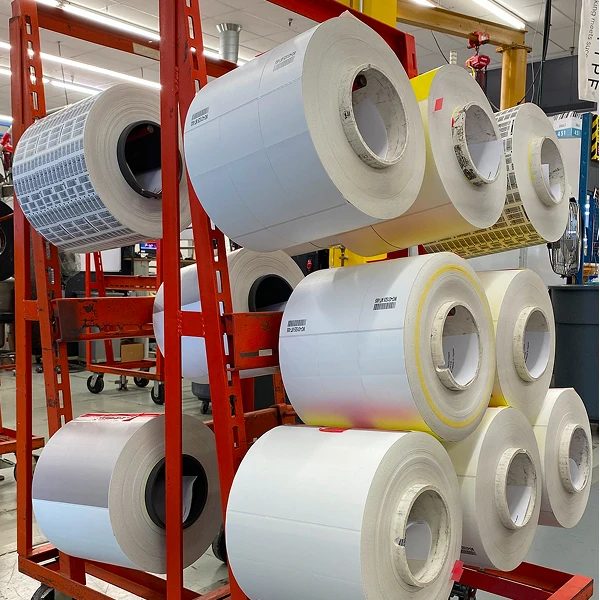
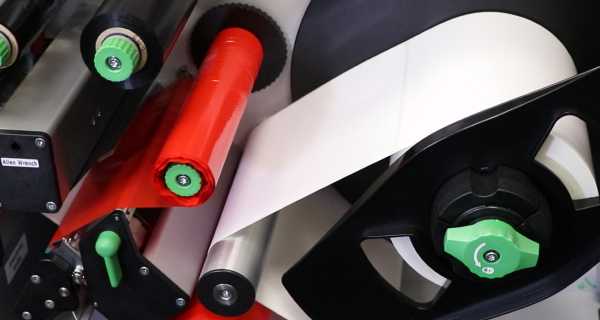
The cab XC Q printer is purpose-built for GHS compliance. With dual print heads, it applies both black and red in a single pass, making it easy to create durable, compliant hazard labels in-house. Its robust construction and high-speed output make it reliable for continuous production environments.
Prints black and red simultaneously with two ribbons
Supports durable synthetic labels suited for chemical environments
Designed for industrial reliability and large-volume label production.
Integrates easily with labeling software for seamless workflow.
Ensure your labels meet every requirement—with materials, formats, and print strategies tailored to your needs. Fill out the form and our team will help you find the most effective solution for your workflow.
GHS labels exist to make sure chemical hazards are understood instantly, no matter where a product travels or how it is handled. They combine visual symbols, standardized wording, and supplier information into one consistent format. By requiring the same structure worldwide, GHS labels reduce confusion, improve safety, and help companies stay compliant across borders.
Identify the chemical substance or mixture by name, code, or batch number. This ensures users always know exactly which product they are handling.
Use “Danger” for high-risk hazards and “Warning” for less severe ones. The signal word sets the tone for how cautious handlers need to be.
Standardized language explains the nature and degree of chemical hazards, such as causing burns, cancer, or explosions, making risks clear and consistent.
Provide specific instructions on protective equipment, storage, first aid, and disposal. These statements support users in managing the hazards safely.
Lists the name, address, and phone number of the manufacturer or distributor. This ensures accountability and offers a direct contact for more information.
Nine symbols enclosed in red diamonds quickly convey hazard type, from flammability to toxicity. They provide universal visual language for chemical safety.
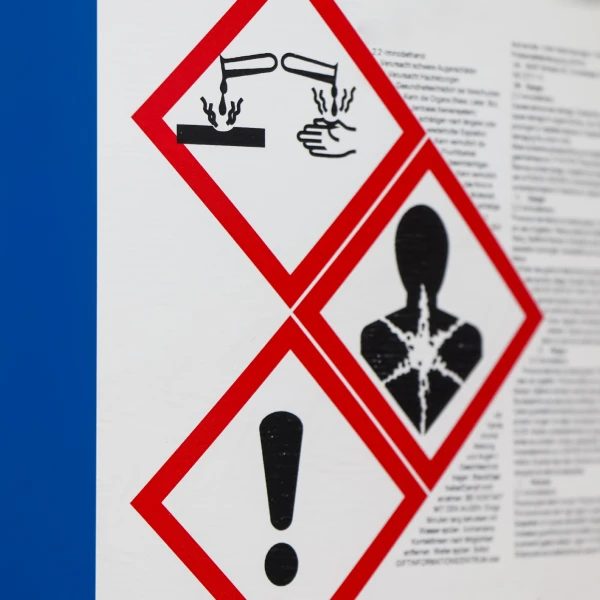
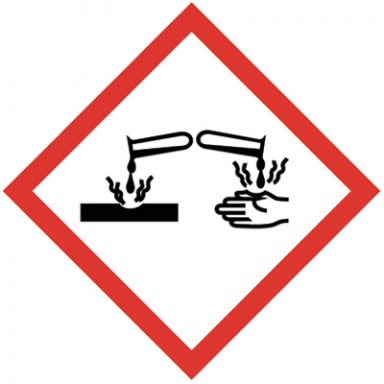
Applied to chemicals that burn skin, damage eyes, or corrode metals. Strong acids and bases often carry this pictogram to warn of severe contact hazards.
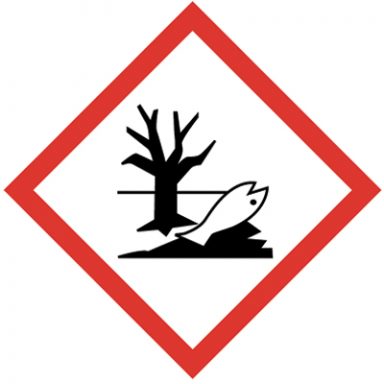
Warns of hazards to aquatic life, both immediate and long-term. Found on substances that pollute waterways or damage ecosystems, often regulated in global markets.
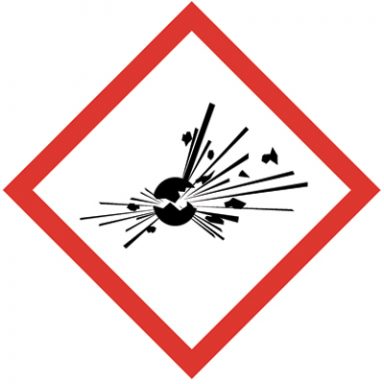
Reserved for explosives, unstable substances, or self-reactives that may detonate under heat, shock, or friction. Highlights an immediate risk of violent reaction.
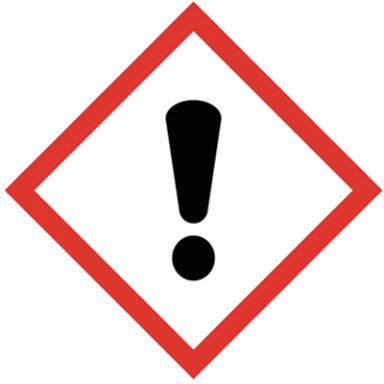
Marks substances that cause skin or eye irritation, allergic reactions, dizziness, or drowsiness. Used for lower-level acute toxicity and other moderate health hazards.
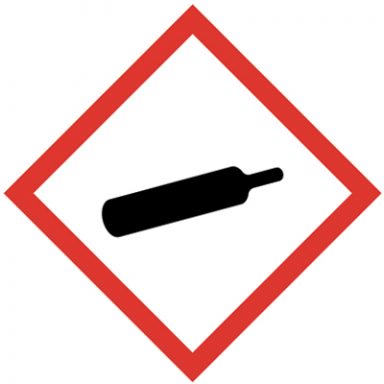
Identifies gases stored under pressure, including compressed, liquefied, or refrigerated gases. These containers can explode if heated or cause cryogenic burns on contact.
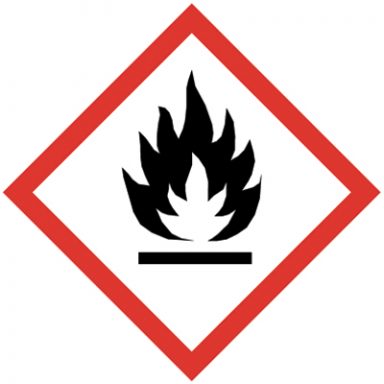
Indicates materials that catch fire easily, self-heat, release flammable gas, or react dangerously with air or water. Found on flammable liquids, solids, gases, and organic peroxides.
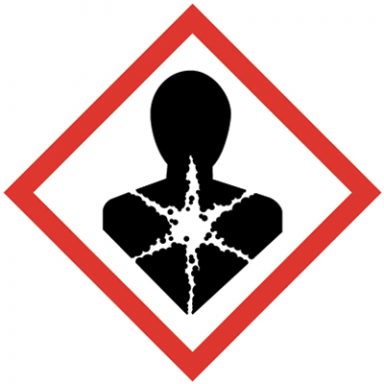
Signals long-term health effects such as cancer, genetic mutations, reproductive harm, organ damage, or respiratory sensitization. Use on chemicals that can cause serious, chronic health risks.
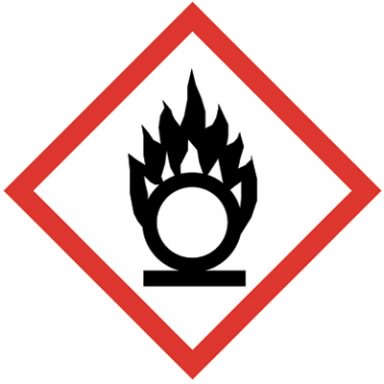
Indicates oxidizers — substances that can intensify fires or cause other materials to ignite. Common with oxidizing gases, liquids, and solids in industrial use.
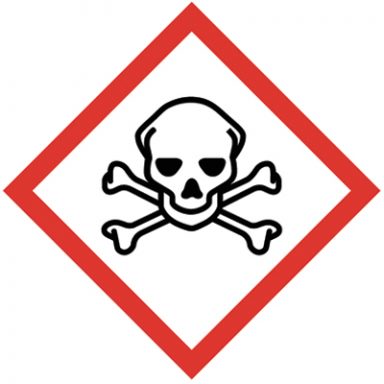
Signals acute toxicity that may be fatal or harmful in small doses, whether inhaled, swallowed, or absorbed through skin. Used for poisons and highly toxic chemicals.
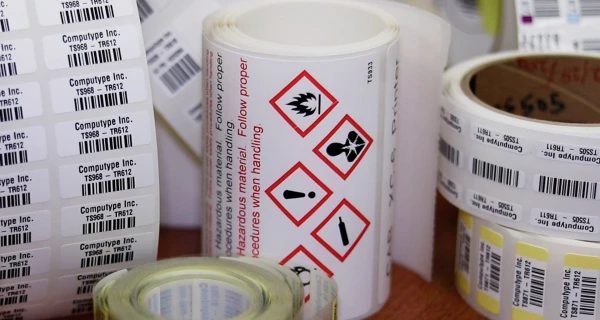
Labels must remain legible and firmly attached, resisting chemicals, moisture, and abrasion so that hazard information is never lost during handling or storage.
All containers for hazardous chemicals — from drums to vials — require labeling, unless a temporary container is used immediately by the same worker.
If new information changes a chemical’s classification, labels must be updated quickly to reflect it, ensuring accuracy and compliance across the supply chain.

Have questions? We’re here to help.
Contact us to connect with a specialist who understands your industry and can provide the right solutions for your business. Let’s start a conversation.
Take advantage of our volume discounts for bulk orders. Reach out to us for a personalized quote tailored to your needs.
"*" indicates required fields